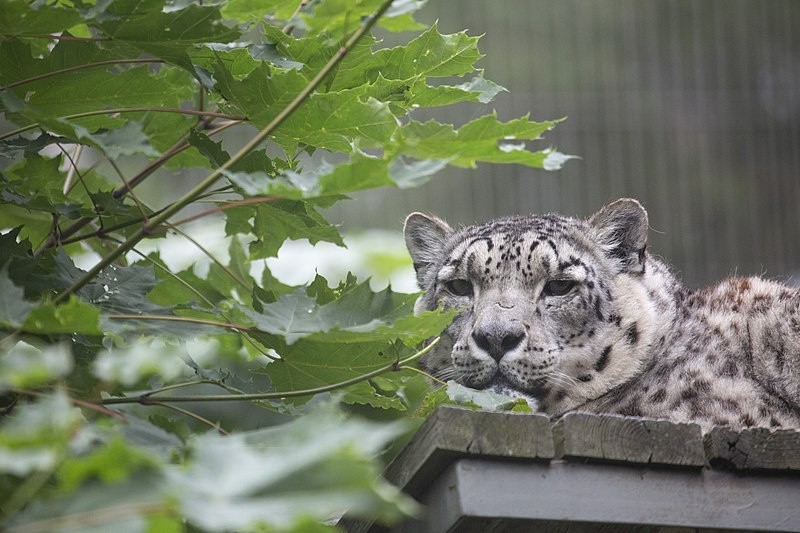The rare and secretive snow leopard is one of the few beasts that has captured the human imagination.
According to the red list of threatened species, fewer than 7,000 Panthera uncia are expected to persist over Asia's high mountains.
A fifth of them dwells in Tajikistan's Pamir mountains, the world's third-highest environment after the Himalayan and Karakoram ranges. The leopards appear to be prospering here, despite the odds.

"The situation with snow leopards in Tajikistan is hopeful since the population is rising," said Khalil Karimov, a wildlife scientist and scientific consultant to Tajikistan's Association of Nature Conservation Organizations (Ancot).
"We have between 350 and 450 cats, while the precise number is hard to determine given to the leopards' nature and the secluded location in which they live."
Situation in Tajikistan
Tajikistan, a landlocked, mountainous nation bordering China and Afghanistan, was the Soviet Union's easternmost outpost for decades.
When the USSR fell apart in 1991, the nation descended into a five-year civil war that claimed the lives of 100,000 to 300,000 people and caused a million more to flee their homes.
The country's unique mountain ungulates - Asiatic ibex, Marco Polo sheep, markhor, and urial - were driven to near extinction due to the leopards' predation.
However, a network of grassroots efforts has reversed this - and other species' - loss in recent years.
Tajikistan now has five community-run conservancies spanning 150,000 hectares (580 square miles), with others in different stages of creation.
The M-Sayod markhor reserve in the western Pamirs, with its 35,000 hilly hectares bordering northern Afghanistan, is one of these success stories.
Since its founding in 2005, the family-run reserve has experienced a tenfold rise of Bukharan markhor (Capra falconeri heptneri), a wild goat with iconic spiral horns.
"We used to hunt markhor for meat, and we had no idea they were endangered," recalled Khudoydod Mulloyorov, whose father, Devlatkhan, created the reserve.
"Back then, life was so harsh that people hunted to live. Afghans would even cross the river to hunt snow leopards and sell their fur."
Snow Leopards
More markhor implies more snow leopards, their major predator.
In 2013, six were found here, making it the world's greatest density. In 2016, a crew returned and discovered ten cats in the same place.
Tajikistan's snow leopards have an unexpected savior, with little cash from tourism and few significant international contributors.
"Foreign trophy hunting provides 99% of the funds for conservation in Tajikistan," added Karimov. "In the past, people would go into the mountains and slaughter whatever they could find, but today they protect them because they have monetary worth."
Saved by Trophy Hunters

According to Karimov, international trophy hunters contribute millions of pounds to the Tajik economy each year, with annual quotas for shooting markhor, ibex, wild boar, Marco Polo sheep, and urials imposed by the government.
Three of Tajikistan's 12 markhor licenses were given to the M-Sayod conservancy in 2021, with hunters spending between £100,000 and £145,000 to shoot one goat, with 30% of the proceeds going straight to the reserve.
This revenue is a lifeline for many in this isolated mountainous region, where employment is rare, and most families have at least one member working in Russia (a flow of money impacted first by Covid and now by the invasion of Ukraine).
"There would be no conservation here if trophy hunting didn't exist," Mulloyorov argued. "We employ 20 people and enhance local infrastructure thanks to hunting."
An ex-hunter named Mahan Atabaev maintains a 92,000-hectare reserve on the Alichur plateau, a predominantly ethnic Kyrgyz territory in the country's extreme northeast.
It is one of the hardest inhabited areas on Earth, with an average height of 4,000 meters and winter temperatures often reaching -50 degrees Celsius (-58 degrees Fahrenheit).
When the reserve was founded in 2012, 106 Marco Polo sheep - the world's largest sheep - were registered. There are now almost 500 of them.
Ibex numbers have also climbed.
Thriving Population
Snow leopards have thrived in the same way as Marco Polo and ibex at M-Sayod. None of the cats were seen here in 2011. Nine were caught on camera traps in 2017.
Karimov claimed that many tourists - with all the associated environmental damage - would be required to generate the same amount of revenue.
The climatic catastrophe, not poaching, is currently the greatest danger to Tajikistan's biodiversity. A third of Tajikistan's 8,000 glaciers will vanish totally by 2050.
The Pamirs' climate is becoming unpredictable due to these worrisome glacier retreats, with longer, colder winters and drier summers.
Last winter, the temperature on the Alichur plateau dropped to -63°C, killing 700 yaks and 1,000 sheep in Bash Gumbez, a settlement of 44 houses.
Conditions like this spell doom for the wild herds on which snow leopards rely for survival.
Read also: Real Extent of Overfishing: How this Disruptive Behavior Can Cause Irreversible Destruction
For more Environmenta News, don't forget to follow Nature World News!
© 2025 NatureWorldNews.com All rights reserved. Do not reproduce without permission.





